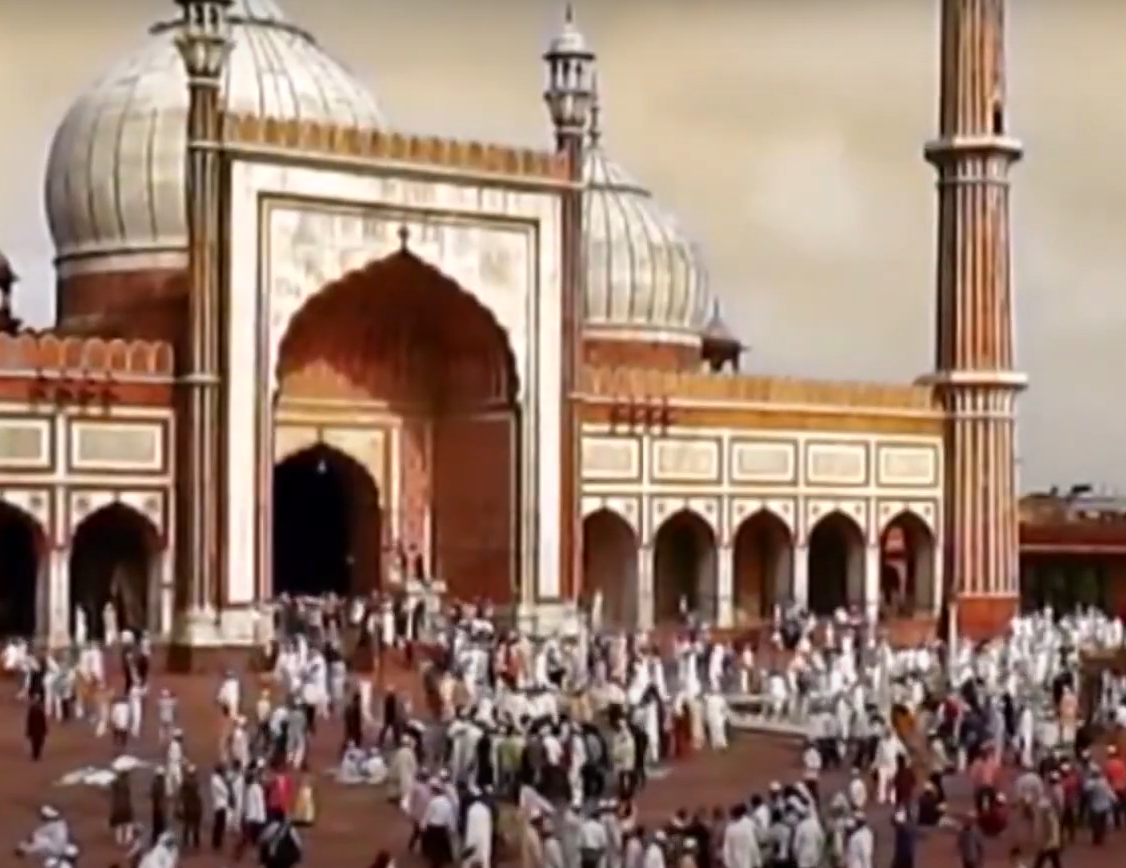
Grand Istiqlal Mosque in Jakarta, Indonesia is the largest mosque in Southeast Asia and the third largest Sunni mosque in term of capacity. This national mosque of Indonesia was built to commemorate Indonesian independence and named “Istiqlal”, an Arabic word for “independence”. The mosque was opened to the public 22 February 1978. Within Jakarta, the mosque is positioned next to Merdeka Square and the Jakarta Cathedral.
The mosque has seven entrances, and all seven gates are named after Al-Asmaul-Husna, the names of God in Islam.The number seven represents the Seven Heavens in Islamic cosmology. The ablution fountains are on the ground floor, while the main prayer hall and main courtyard are on the first floor. The building consists of two connected rectangular structures: the main structure and the smaller secondary structure. The smaller one serves as a main gate as well as stairs and prayer spaces.
The rectangular main prayer hall building is covered by a 45 m diameter central spherical dome; the number “45” symbolizes the 1945 Proclamation of Indonesian Independence. The main dome is adorned with a stainless steel ornamental pinnacle in the form of a crescent and star, the symbol of Islam. The smaller secondary dome is also adorned with a stainless steel pinnacle with the name of Allah (God) in Islamic calligraphy.
The dome is supported by twelve round columns, and the prayer hall is surrounded by rectangular piers carrying four levels of balconies. Twelve columns represent the (mostly accepted) birthday of the Islamic prophet Muhammad in 12th Rabi’ al-awwal. The main floor and the four levels of balconies make five floors in all; the number “5” represents the Five Pillars of Islam, within symbolizes the five daily prayers, and also of the Pancasila. Staircases at the corners of the building give access to all floors. The main hall is reached through an entrance covered by a dome 8 m in diameter; the number 8 symbolizes August, the month of Indonesian Independence.
The interior design is minimalist, simple and clean-cut, with a minimum of stainless steel geometric ornaments. The 12 columns are covered with stainless steel. On the main wall on qibla there is a mihrab and minbar in the centre. On the main wall, there is a large metalwork in Arabic calligraphy, spelling the name of Allah on the right side and Muhammad on the left side, and also calligraphy of Surah Taha 14th verse in the centre. The metalworks, stainless steel covers and ornaments were imported from Germany. Originally, as in the National Monument nearby, the white marbles are from marbles are from Tulungagung marble quarries in East Java.
The main structure is directly connected to the arcades that are spread around the large courtyard. The arcades connect the main building with a single minaret in the southern corner. Unlike many Arabic, Persian, Turkish and Indian mosques with multiple minarets, Grand Istiqlal mosque has a single minaret to symbolize the divine oneness of God. It is 66.66 m tall to symbolize the 6,666 verses in the Quran. The 30-metre-high stainless steel pinnacle on top of the minaret symbolizes the 30 juz’ of the Quran. On the southern side near the minaret there is also a large bedug (large wooden drum made of cow skin). In common with the entire Islamic world, traditionally Muslims in Indonesia use the drum with the adhan (call to prayer). The mosque offices, function hall, and madrasah are on the ground floor. The mosque provides facilities for social and cultural activities.
Some Muslims in Indonesia said Istiqlal’s dome and minaret structure was much too modern and Arabic in style. They regarded the architecture as being out of harmony with Islamic culture and architecture in Indonesia.
Having remained essentially unchanged for 41 years, the mosque has undergone a major renovation, including architecture, landscaping, and new interior and exterior lighting to transform the mosque into an impressive landmark representing the pride of Indonesia. The renovation was completed in July 2020 and the mosque Mosque was inaugurated by President Joko Widodo on January 7, 2021. The renovation of the Istiqlal Mosque Complex was carried by Yodya Karya Firm.
I agree to the terms outlined below:
You agree to upload and assign Mosqpedia Database the rights to use the content worldwide and in perpetuity across all current and future media platforms. Mosqpedia Database may edit, copy, adapt and translate your contribution.
The content will be distributed under the Creative Commons Attribution-Deed – Attribution-NonCommercial-NoDerivatives 4.0 International – Creative Commons
All data will be stored in line with data protection regulations.
I agree to the terms outlined below:
You agree to upload and assign Mosqpedia Database the rights to use the content worldwide and in perpetuity across all current and future media platforms. Mosqpedia Database may edit, copy, adapt and translate your contribution.
The content will be distributed under the Creative Commons Attribution-Deed – Attribution-NonCommercial-NoDerivatives 4.0 International – Creative Commons
All data will be stored in line with data protection regulations.